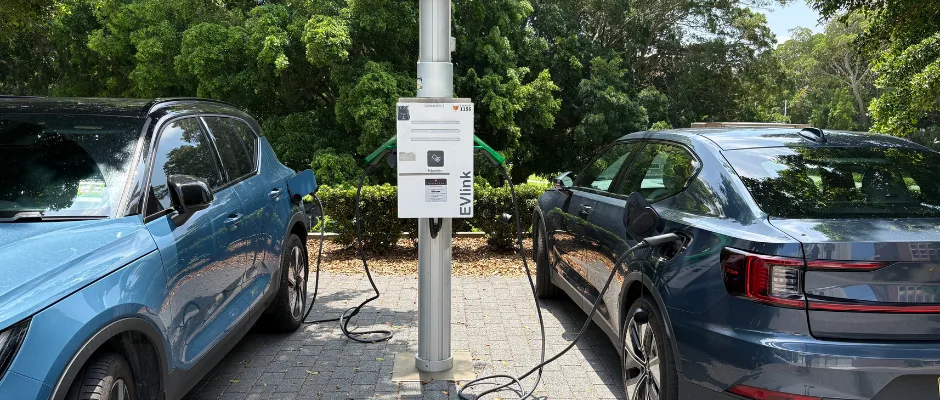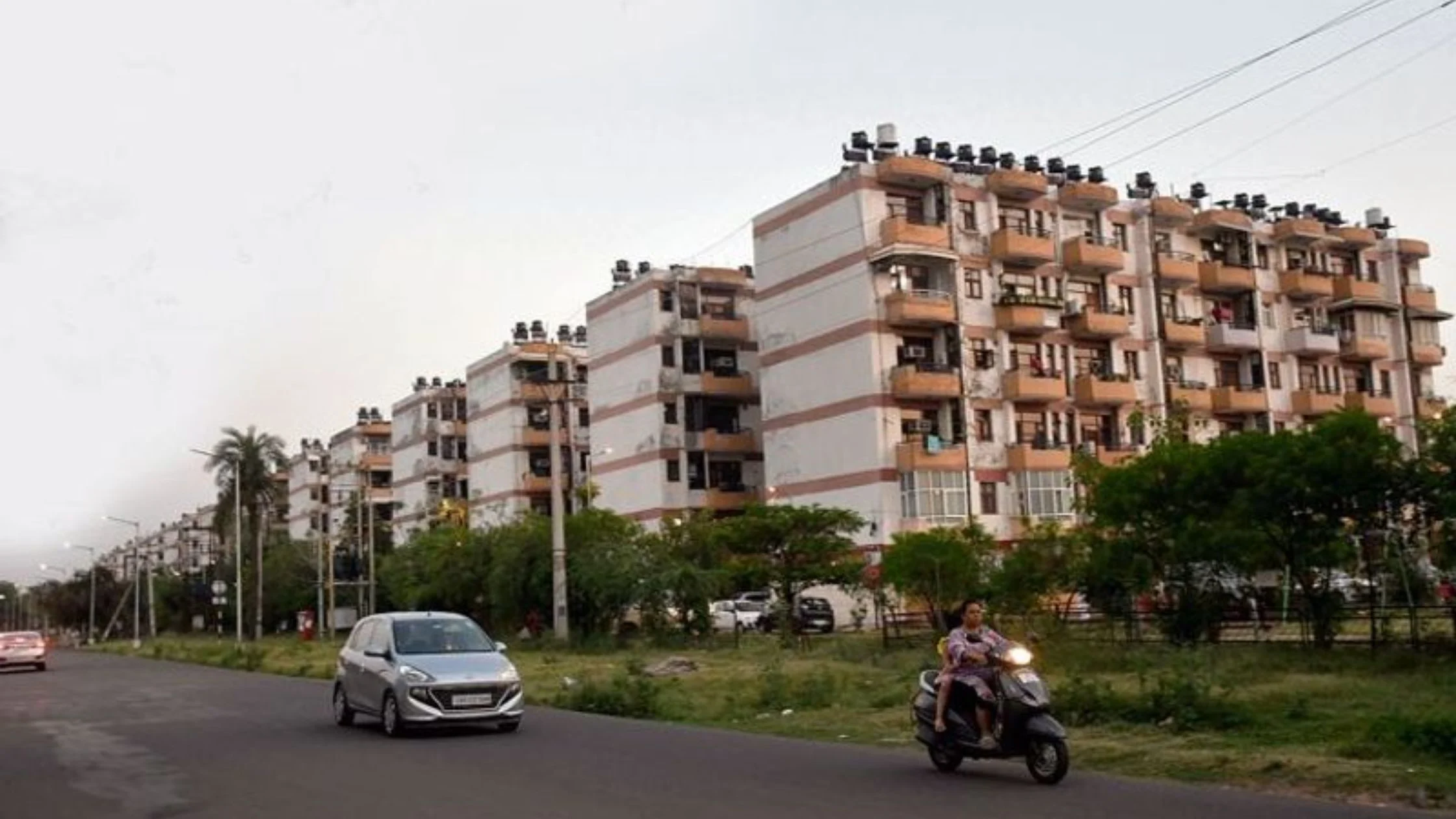Table of Content
Electric vehicles (EVs) are rapidly emerging in India and represent a pivotal milestone in the transition to sustainable mobility. The India Brand Equity Foundation forecasts that the Indian EV market will grow from USD 3.21 billion in 2022 to USD 113.99 billion in 2029, for a mind-boggling compound annual growth rate (CAGR) of 66.52%. Over this period of transition, housing societies will likely begin to see increasing demand for EV chargers, which means Resident Welfare Associations (RWAs) should take the necessary steps in this document to start delivering EV charging strategies for their members.
In this guide, we’ll explore the steps housing societies need to follow to implement EV chargers, discuss the benefits of such installations, and highlight the importance of aligning with government policies.
Steps to Implement EV Chargers in Housing Societies
1. Assessing Demand in the Housing Complex
The first task will be to gauge the need for EV chargers in the community. A survey of the community residents will get an idea of how many residents own EVs, and how many residents are planning on buying an EV in the near term. This information will be helpful for understanding the power needs and deciding on charger types and numbers. At the outset of an EV society, societies can install Level 1 and level 2 chargers.
These chargers are less expensive to install and provide sufficient charging for what is assumed to be moderate demand. In the future, as an EV society matures, the associated infrastructure can grow as moderate demand grows into higher cycles of demand.
Also Read: Condominiums Explained: Everything You Need to Know
2. Choosing Between Individual and Community EV Chargers
Societies need to decide whether to install:
- Individual Chargers: Suitable for private parking spaces.
- Community Chargers: Ideal for shared parking areas, especially if the number of EV owners is below 5% of total residents.
Community chargers can be a cost-effective starting point, but long-term planning should accommodate individual charging points as EV ownership grows.
3. Determining the Power Source
Decide whether the EV chargers will draw electricity from:
- Common Load Meters: Shared among all residents.
- Individual Load Meters: Dedicated to specific users.
This decision will impact the grid design and installation costs. Additionally, ensure the power load capacity meets the demand with a safety margin of 1.25 times.
4. Planning the Implementation Cost
Financial planning is crucial for installing EV chargers in housing societies. Consider the following:
- Government Subsidies: Explore property tax rebates and financial incentives for EV infrastructure.
- Cost Sharing: Determine whether the RWA or individual EV owners will bear the costs.
- Capex vs. Opex Model: For low-cost installations, societies can use maintenance funds. For larger investments, costs can be distributed among residents.
5. Allocating Space for EV Chargers
Select an appropriate location for the chargers, preferably in the parking area close to an existing power source. This reduces cable and installation costs. Ensure the space is:
- Secure and well-lit.
- Equipped with additional power backup to handle simultaneous charging.
6. Complying with Regulations
RWAs must align with state and central guidelines. For instance, the Model Building Bye Laws (MBBL) 2016 recommends dedicating 20% of parking spots to EV chargers. Ensure compliance with local electricity board requirements if opting for a new connection to avail subsidies.
.jpg)
Benefits of EV Chargers for Housing Societies
1. Increased Convenience
Having EV chargers installed on the premises of the society means residents won’t need to leave the building to charge, eliminating range anxiety and improving daily convenience.
2. Generate Income
The society can set a low charge for the information of EV charging, which means low maintenance costs and a steady revenue stream to tackle the maintenance costs. The installation of the charger is greatly reduced by government incentives.
3. Increase Property Value
Regardless of ownership or renting, properties with EV chargers provided by the society are both more appealing to buyers and tenants. Therefore, owners and landlords can expect higher property values and higher rental yields.
4. Sustainability
The addition of EV chargers promotes residents to think about reducing their carbon footprint, contributing to a more sustainable community and environment.
5. Following Government Policy
By installing EV Chargers, the society is staying at the forefront of India’s goal to push EV adoption. Implementing EV Stations showcases the society’s proactive approach regarding EV compliance and adapting to federal legislation as it continues to evolve.
Challenges in Installing EV Chargers
While the benefits are obvious, the implementation of EV chargers in housing societies can have difficulties:
- Startup Costs: There are subsidies available but the upfront cost for infrastructure can be high.
- Load Management: Societies need to ensure that the power grid can handle the increase in load.
- Regulatory Barriers: Following local regulations and getting necessary permissions can take time.
- Resident buy-in: Gaining the approval and agreement of residents to install the infrastructure can take effective communication and consensus.
Also Read: Flats vs Apartments: Understanding the Essential Differences
Conclusion
Electric vehicles are paving the way for a sustainable transportation future and housing societies need to keep up and meet the demand. Installing EV chargers in housing society is not only about convenience but also embracing eco-conscious living and improving property value in the long run. Through structured planning that identifies demand, budgets finances, compliance, and foreseeable challenges, RWAs will be able to deploy EV chargers successfully in their complexes.
While EV chargers will require investment, with current financing options and increasingly sustainable initiatives, the government has created a dynamic which makes the introduction of housing society EV chargers increasingly easy to roll out.
Follow AquireAcers Whatsapp Channel to Stay Updated With The Latest Real Estate News






_1765522271.webp)

_1765444636.webp)

Ans 1. Installing EV chargers provides convenience to residents, increases property value, generates additional income for the society, and aligns with sustainability goals and government policies.
Ans 2. The steps include assessing demand, deciding between individual or community chargers, determining the power source, planning the implementation cost, allocating space, and ensuring compliance with regulations.
Ans 3. Societies can start with Level 1 and Level 2 chargers, which are affordable and cater to moderate demand. As EV adoption increases, infrastructure can be upgraded to meet higher demand.
Ans 4. Government subsidies, property tax rebates, and financial incentives are available for EV infrastructure. Societies can also explore cost-sharing models among residents or use maintenance funds for smaller installations.
Ans 5. Challenges include high startup costs, load management to prevent grid strain, regulatory compliance, and gaining resident approval for the project.